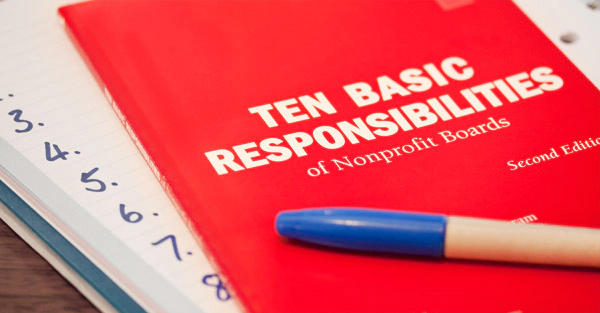board-dynamics
The Board and the CEO Relationship
Published: May 6, 2012
Read Time: 10 minutes

The relationships between all stakeholders are essential to the overall health and wellbeing of an organisation. However, the relationship between the Chief Executive Officer (CEO) and the Board of Directors (Board) is the most crucial, and the state of this relationship has potentially the greatest influence on organisational success.
For this relationship to work well, it must be one of negotiation, consideration and understanding of the role and perspective of the other. There must also be a recognition that the CEO and the Board play separate and distinguishable roles, but must work together in order to achieve organisational goals.
Role clarity is essential to ensuring a productive CEO/Board relationship. The primary role of the Board is to govern, to control managerial opportunism and to ensure that CEOs carry out their managerial functions and duties in the best interests of Members. The Board is one of a series of stakeholders, which the CEO must serve effectively. An important function of the Board is to choose the CEO, and to assist the CEO in selecting the management team. Collectively, the Board remains the CEO’s employer, and the role of the CEO is one primarily of management and administration. The CEO is responsible, within parameters established by the Board, for determining and overseeing the execution of the Board’s directions and policies to ensure desirable outcomes.
As non-profit industry sectors have become increasingly professionalised, so too have the expectations of a CEO of a non-profit organisation become increasingly broad and sophisticated. In this context, the list of demands a CEO faces and the number of constituencies they must routinely communicate with on behalf of the organisation are increasingly multifaceted.
If the CEO/Board relationship is to succeed, the Board should be sensitive to the responsibilities that the CEO has to these other parties. A strong partnership between the Chair of the Board and the CEO is a crucial element in a profitable relationship. Such a relationship can help an organisation execute its strategy more effectively, successfully navigate a crisis and resolve any other multitude of issues that an organisation and its Board will encounter. It is important that the CEO and the Board are seen as a partnership, as allies, who play roles, which are essential to achieving the common organisational purpose.
Comparing Management Responsibility
The following four key areas of defined responsibility are crucial to the CEO/Board relationship.
1. Accountability
The general accountability role of the Board is to ensure that the organisation is serving the needs of the section of the community or the stakeholders it has a responsibility to serve. It also must be aware of compliance issues and requirements of regulators (such as ASIC or funding providers). It is important to note that the Board of Directors are bound by directors duties under the Corporations Act 2001 (Cth) (or similar duties under other legislation) and have a duty to act bona fide (in good faith) in the interests of the organisation as a whole and, in that sense, are also accountable to act in the best interests of all stakeholders.
The CEO is accountable to the Board. The CEO should report to the Board and keep it informed of the activities of the organisation. However, the CEO is likely to perform a balancing act in determining how much detail is given when reporting. If the CEO-Board relationship is characterised by frequent and onerous reporting requirements, the CEO will be diverted from building relationships with other constituencies, which are crucial to the organisation.
Therefore, the way in which these accountability roles are executed is crucial. Responsibilities should be performed in a way which is harmonious with the role of the other, and allows for consistent communication and cooperation in order to meet the ultimate accountability the organisation holds to its stakeholders.
2. Decision Making
There are distinct decision-making roles in the CEO/Board relationship. The Board drives the strategic direction of the organisation and is responsible for setting goals as well as developing polices and corporate strategy designed to translate an organisation’s mission into measurable objectives and goals. The Board also sets discretionary financial and related operating limits for management, and regularly assesses activities of the organisation against the mission statement and goals, as well as annual business plans to ensure the organisation is meeting its original purposes.
These decision-making responsibilities should not be delegated, and the Board should always reserve all matters which have the potential to have a material impact on the reputation and financial stability of the organisation. For example, in Australian Securities & Investments Commission v Healey & Ors (Centro), it was decided that the law imposes a strict liability on approval of financial statements by directors. Therefore, directors ought to solely carry out the assessment of such statements and, in circumstances where an error is identified; they must then seek the advice of management and external advisors. While it is noted that care should be taken when applying this decision outside of a financial reporting context, the case outlined the limitations of the extent to which directors can place reliance on management and external advisors in this realm of responsibility. This is an example of a role which must be maintained by the Board.
The decision-making role of the CEO is different. The CEO is responsible for carrying out and implementing the direction, goal and policies, which have been designed or created by the Board, and then reporting on operational outcomes. It is also the responsibility of the CEO to ensure that everyone within the organisation is aware of the agreed strategic direction, goals and policies so that all are heading in the same direction. CEO decision-making largely relates to the way in which it is best to practically implement those measurable objectives and goals developed by the Board.
3. Policies
While the Board holds responsibility for developing organisational policies, the daily contact and involvement that a CEO has with the operations of the organisation, means the CEO is well placed to provide policy suggestions for the Board’s consideration. After all, the CEO will be responsible for implementing and monitoring these organisational policies.
For example, if there is a need for an adequate program in the sector of the community that a non-profit organisation is serving, the CEO could propose a policy to the Board in order to address this policy gap. It is then the role of the Board to decide whether this is a suitable use of organisational resources and, if so, hand it back to the CEO for implementation and management. As the CEO is in a position to notice the need for new policies, and the Board is in a position to approve them, this is a key example of the importance of an effective CEO/Board relationship; one that works together in order to achieve policy goals.
4. Financial Reports
The CEO is required to prepare annual budgets and financial reports for presentation to the Board for review and approval. The CEO also has an opportunity to offer ideas and strategies on how performance can be improved. The role of the Board is to review, analyse and monitor the information presented by the CEO, as well as ask the appropriate questions to gain all the necessary information. The Board is ultimately responsible for the financial health of the organisation, and therefore requires the cooperation of the CEO in order to ensure that it is fully informed.
Factors That May Affect the CEO/Board Relationship
In some organisations, interaction between the Board and the CEO can be a complex and, at times, tense relationship. Nevertheless, it is crucial for the running of the organisation that this relationship is a healthy and professional one. There is potential for Board members to sometimes feel excluded or disempowered, and they may feel it is a struggle to secure the information they require from a CEO. Likewise, many CEOs perceive the Board as a monkey on their back, due to the monitoring and controlling role of the Board.
Respect must go both ways in the CEO/Board relationship. Support is also essential and is a recognition that both the CEO and the Board are on the same side, working together to achieve a common organisational purpose. Ambivalence, or perceived ambivalence, in a Board’s support for the CEO will reduce the functioning of the organisation, and the ability of the organisation to effectively respond to change. Competence means not only relevant expertise that each director is bringing to the Board, but also professionalism in conduct as a Board member. For any CEO, it is important to see consistency and certainty in decision-making by the Board. If a CEO is not confident that decisions made will be supported by the Board, then he or she will feel a lack of confidence in their position within the organisation. It is equally important for a Board to receive clear communication from the CEO (especially on financial and administrative matters), effective representation of the organisation and a prompt response to reasonable requests for information.
Within an increasingly sophisticated environment in fields of non-profit work, which have become more technically and logistically demanding, the CEO looks to the Board to raise its game, support the CEO’s position and ensure a professional approach to its organisational contribution.
Mutual Obligations
Regardless of the size and type of the organisation, the CEO/Board relationship should be characterised by ‘the best principles of teamwork – mutual respect, an understanding of one’s own contribution, an awareness and reasonable degree of tolerance of each other’s weaknesses and constraints and, overall, a sense of common purpose’. In law, the Board ultimately carries the organisation’s accountability and authority, but in practice, it is the CEO who wields much of the power and authority on a day to day and week to week basis. There needs to be recognition of the importance of both roles to the running of the organisation. Therefore, while it has been discussed that role clarity and distinction is crucial, a successful CEO/Board relationship calls for a level of shared responsibility and parallel process as opposed to a ‘your job’ ‘our job’ attitude. Clear communication, co-ordination and mutual obligation are crucial to the success of the relationship. Role clarity does not mean the roles exist independently, or should be seen as operating separately.
The CEO has the expertise, authority and time to manage the organisation at a pragmatic level. However, the Board has limited time and relies on a flow of information from management in order to exercise its power and responsibility. Therefore, the key objective is to empower both parties to effective carry out their roles and functions in a complementary way.
The Board’s obligations to the CEO include:
- Compensation, benefits, and a working atmosphere that make the CEO’s position attractive to the best possible candidates;
- A clear duty statement and performance goals;
- Regular formal performance reviews;
- Constructive informal feedback on job performance;
- Rewards for tasks well done; and
- Prompt and thoughtful response to request for guidance or assistance.
The CEO’s obligations to the Board include :
- Commitment to the organisation’s mission and sensitivity to the communities it serves;
- Responsible performance of fundamental organisational and administrative tasks;
- An administrative structure and decision-making mechanism that promote a productive working atmosphere and effective staff relations;
- Thorough and timely communication with the Board on financial and administrative matters;
- Effective representation of the organisation in the community and commitment to enhancing its public image; and
- Prompt and thoughtful response to Board member’s requests for information.
Both the Board and the CEO have a duty to act in the best interests of the organisation as a whole. Therefore, the separate roles and distinct responsibilities of the CEO/Board relationship should exist in an environment of teamwork, communication and mutual respect. A healthy and efficient relationship is essential for successfully achieving organisational goals. In particular, a strong, productive relationship between the CEO and the Chair of the Board will support improved corporate performance. Consideration should be given to the obligations which both parties owe to each other, in order to successfully reach a common organisational outcome. A productive CEO/Board relationship is one of negotiation, and a successful negotiator knows not to enter without considering the other party’s needs and perceptions, as well as their own.
Share this Article
Recommended Reading
Recommended Viewing
Author
- About
-
Lauren joined the Mills Oakley Financial Services team as a Graduate in 2012 after completing her Bachelor of Laws at University of New South Wales in 2011. Prior to joining the firm, Lauren worked as an Inquiry Line Officer for the Office of the Legal Services Commissioner of New South Wales, where she responded to and handled enquiries and complaints made under the Legal Profession Act 2004. Lauren has also worked as a legal volunteer for the Shopfront Youth Legal Centre and the Central Coast Community Legal Centre .
Found this article useful or informative?
Join 5,000+ not-for-profit & for-purpose directors receiving the latest insights on governance and leadership.
Receive a free e-book on improving your board decisions when you subscribe.
Unsubscribe anytime. We care about your privacy - read our Privacy Policy .







